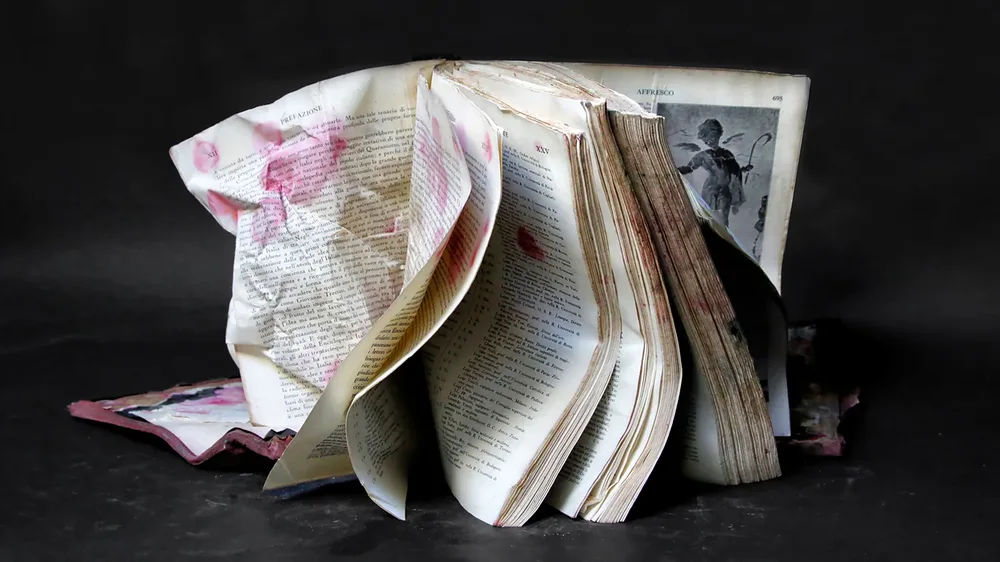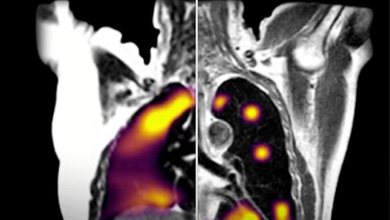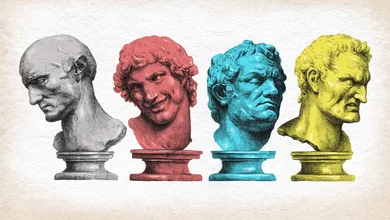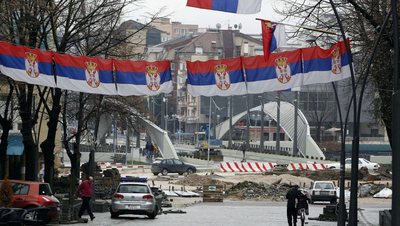
In November 2019, Venice was hit by one of the worst floods in its history, when a rare combination of a full moon, strong winds and a cyclone raised sea levels to 1.89 meters, inundating 85% of the city. Amidst the chaos, Italian photographer Patrizia Zelano made her way to the lagoon city to document the aftermath, but ended up saving 40 old books, many of them more than a century old.
According to Zelano, the books found in flooded houses or in the famous “Acqua Alta” bookstore were damaged to the point where they could no longer be opened — “cemented by water,” as she described them. However, in the photographer’s eyes, they were not simply destroyed objects, but symbols of a cultural heritage in danger. One of them resembled “an archaeological relic from the Stone Age,” another looked “like lace that disintegrated to the touch.”
Upon returning to her studio, Zelano decided to turn these books into a symbolic photographic project — a tribute to culture and memory, but also a warning about the threats Venice faces from rising sea levels and the gradual subsidence of the land.
“It’s an elegy to our history,” she says. “These books hold within them universal knowledge. Through photography, destruction is transformed into hope and resistance.”
As floods are expected to become more frequent according to experts, Zelano's story raises a fundamental question: What is worth saving when faced with disaster? For him, the answer was clear — books, memory, and culture.






















